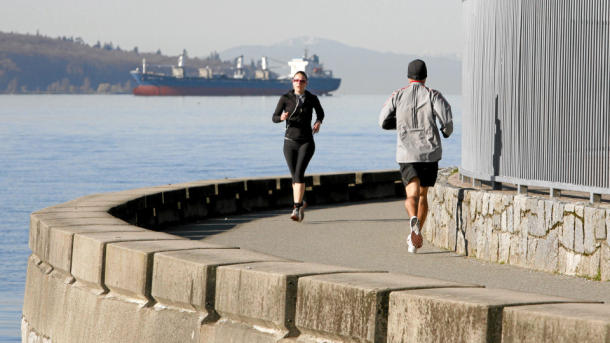The most common cause of running injuries is over-training. When you try to do too much too soon, your body will suffer. Running injuries can also happen due to improper shoes or flaws in body structure and motion.
Fortunately, the majority of running injuries can be easily prevented. Here are some tips on how to avoid running injuries.
How to Avoid Running Injuries
Create a running plan – Unless you have a sensible running plan, you’re likely to become a victim of “too much, too soon.” It’s tempting to run too many miles with too much intensity this is a key on how to avoid running injuries.

Exercise experts recommend increasing your weekly mileage by no more than 10% each week. It’s all right to push your limits, but do it gradually. This will allow you to avoid running injuries such as shin splints and runner’s knees. Common sense and a smart training plan will allow you to reach your goals without suffering from pain and frustration.
Warm up and stretch – Before starting your running session, be sure to warm up for at least five minutes. Brisk walking is a good way to warm up your muscles.
After warming up, start stretching your muscles, especially the calf, groin, hamstrings, and quadriceps. After your run, stretch your muscles again. Many running injuries occur because of inadequate stretching.
Wear the right shoes – Running is a high impact cardiovascular exercise that puts a lot of stress on your joints and feet. Your running shoes should provide the right amount of cushioning and support for the feet. Your feet could suffer lots of injuries if you aren’t protecting them right, this Orthotic Clinic can help you prevent or even treat any existing injuries you may have on your feet.
If your running shoes are worn out, it’s time to get a new pair. Find the right model for your foot type and running style. It’s best to buy your shoes from a specialty running shop where you can be properly fitted for the right type of running shoes.
Wearing shoes and socks that fit properly can also help prevent blisters.
If you have biomechanical foot problems, such as flat feet or high arches, you should look into getting fitted for orthotic shoe inserts. There are also specially designed shoes suitable for runners who suffer from over-pronation or supination.
Cross train – Injuries can happen if you focus only on your running muscles while neglecting others. Cross training develops muscles that work to help prevent running injuries.
Strength training, swimming, biking and other activities help develop your quads, core muscles and overall strength, it will also help if get physical therapy sessions as well. Cross training also helps prevent injuries caused by overuse when you do the same type of exercise all the time.
Know where to run – A final tip on how to avoid injury is simply to run on the right surface. You want to run on a surface that absorbs shock and reduces the impact on your feet, joints and tendons.
If possible, run on grass or dirt trails. Avoid running on concrete, as it is 10 times harder than asphalt. Choose a route that consists mostly of straight paths and slow curves to avoid accidents and injuries.
These tips should, even in the long run, show you how to avoid running injuries, be sure to change things up and be healthy so that your personal running career is more good than injured




